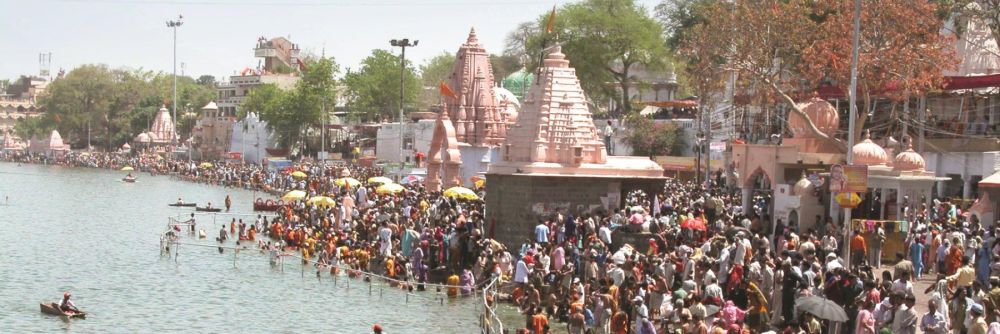

Ujjain, situated in the heart of Madhya Pradesh, India, is a city steeped in historical and spiritual significance, and Ram Ghat is one of the city's most prominent landmarks. As a pivotal site in Indian mythology and history, this sacred ghat, located on the banks of the River Shipra, has been attracting pilgrims and tourists alike for centuries. It holds a place of reverence in the Hindu tradition and is crucial to the spiritual fabric of the city.
The history of tourism in Ram Ghat, Ujjain, intersects with the mythical tales of India's vast epic narratives. According to tradition, Lord Ram, along with his wife, Sita, and brother, Lakshman, visited this ghat during their exile. This divine association lends the ghat its name and its sacred status, making it a must-visit destination for the devout. Besides its mythical connections, Ram Ghat is historically renowned for being a central feature in the ancient city of Ujjain, which once remained a primary location of religious and educational pursuits in India.
Ram Ghat is best known for hosting the Kumbh Mela, a massive Hindu pilgrimage that takes place every 12 years, with the Ardh Kumbh Mela occurring every 6 years. During this auspicious event, millions of devotees descend upon Ujjain and perform holy rituals at the Ram Ghat. The sight of sadhus, sages, and pilgrims submerged in the Shipra river's waters, seeking spiritual cleansing and redemption, is an awe-inspiring spectacle. In addition to the spiritual aspect, Kumbh Mela has also proven to be a significant boost for the local tourism industry.
The continuous influx of pilgrims and tourists to Ram Ghat and Ujjain has been pivotal in shaping the local economy. The tourism industry has seen consistent growth, leading to the development of infrastructure such as hotels, eateries, and various types of shops that cater to the needs of visitors. The local government has also taken steps to preserve and promote Ram Ghat as a principal tourist attraction, implementing measures to ensure the cleanliness and ecological health of the Shipra River.
In recent years, there has been a noticeable shift towards sustainable and ecotourism within the region. Authorities have emphasized maintaining the sanctity and cleanliness of Ram Ghat, given its cultural and environmental importance. Efforts to educate visitors about sustainable practices and to promote the ghat as a center for cultural immersion and learning have become more prevalent.
Digital advancements have also played a role in influencing tourism trends. With the advent of various online platforms, virtual tours and online darshans during the Kumbh Mela and other significant festivals have enabled believers from all around the world to experience the spirituality of Ram Ghat remotely.
There are ongoing initiatives to balance tourism growth with heritage conservation. The archaeological significance of Ujjain's many ancient temples and sites surrounding Ram Ghat has led to increased collaboration between government authorities, historians, and conservationists. The aim is not only to maintain the historical integrity of these locations but also to ensure that tourism development does not undermine the city's cultural essence.
The city of Ujjain, with Ram Ghat at its heart, remains a timeless beacon for pilgrims and a testament to India's rich spiritual tradition. As tourism continues to evolve, the legacy and sanctity of Ram Ghat stand undiminished, inviting travelers from all corners of the globe to partake in its divine heritage.